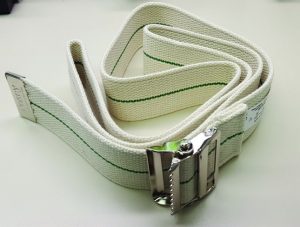Author: Wendy Wintersgill, MSN, RN, CRRN, ONC, ACNS-BC
Tips for assessing patient mobility and using gait belts
All nurses want to keep their patients safe, but falls and injuries when moving patients are a common problem. According to the Agency for Healthcare Research and Quality, patient falls occur at a rate of three to five per 1,000 bed-days, 700,000 to 1 million hospitalized patients fall each year, approximately 50% of the 1.6 million U.S. nursing home residents fall every year, and nearly 10% of Medicare skilled nursing facility residents experience a fall resulting in significant injury. Among RNs, overexertion and bodily reaction (the way that the body responds or reacts to an external influence) were the most prevalent events (45.6% of all cases within the profession) that led to occupational injuries and illnesses, according to a 2016 U.S. Bureau of Labor Statistics report.

